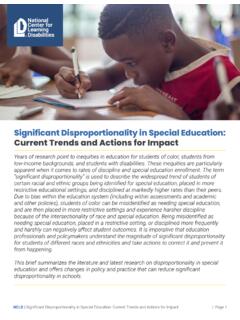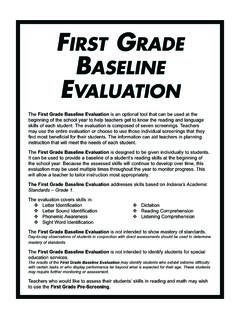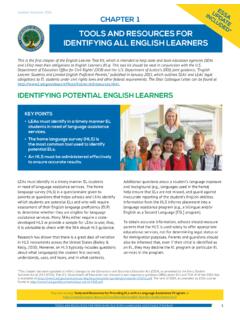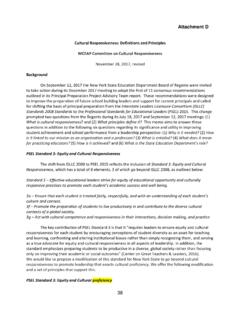Transcription of Strategies for Supporting Students Who Are Twice …
1 THE JOURNAL OF SPECIAL EDUCATION APPRENTICESHIP, 7(2) Strategies for Supporting Students Who Are Twice -Exceptional Janet Josephson Charlton Wolfgang Rich Mehrenberg Millersville University of Pennsylvania Students with disabilities have complex learning needs. It wasn t until the 2004 reauthorization of the Individuals with Disabilities in Education Act (IDEA) that federal attention was pointed towards Students who are both gifted and have a disability.
2 This concept, known as Twice -exceptionality, is a difficult concept to fully comprehend as the characteristics of these Students can be complicated. Reis, Baum, and Burke (2014) define Twice -exceptional (2e) Students as those who have simultaneous characteristics of a gifted student and a student with a disability. In order to earn the 2e label, Students must be identified as having high aptitude as well as a disability as classified by their state of residence.
3 Although research on 2e Students has increased within the last three decades, the needs of these Students are not necessarily being met in schools (National Association for Gifted Children, 2013). There is still limited consensus on the needs and characteristics of these Students as well as a lack of understanding of the most effective Strategies for teaching them (Reis et al., 2014). There are stark differences between 2e Students and those Students identified as having solely a disability or gifts and talents.
4 Students with disabilities are often recognized by their families and teachers when they are not showing the same academic, social, or developmental characteristics as same-age peers. In the educational setting, teachers often target the areas of development that need support when working with Students with disabilities. Students with gifts and talents often stand out to their families and teachers in other ways; they display strengths, talents, or interests that differentiate them from same-age peers.
5 Teachers of Students with gifts and talents may work to create advanced programming that appropriately challenges them. According to Baum and Owen (2004), what complicates the identification and progress of 2e Students is the fact that their characteristics often mask each other; their disability can mask their gifts and talents, or their gifts can mask their disability. Furthermore, because of the variation of characteristics among defined disabilities, it is challenging to describe specific Vol.
6 7(2) June 2018 THE JOURNAL OF SPECIAL EDUCATION APPRENTICESHIP, 7(2) characteristics of 2e Students (Barnard-Brak, Johnsen, Hannig, & Wei, 2015). In the educational setting, teachers may experience difficulties meeting the needs of 2e Students while simultaneously addressing their remarkable strengths because these Students don t meet the traditional definitions of their dual exceptionalities (Reis et al.)
7 , 2014). According to the National Center for Education Statistics, an estimated 3,189,000 American school-age Students were enrolled in programs for gifted Students during the 2011-2012 academic year (Snyder, de Brey, & Dillow, 2016). It is estimated that between 180,000 (Davis & Rimm, 2003) and 360,000 (National Education Association, 2006) of those Students are identified as 2e. Barnard-Brak et al.
8 , (2015) estimate that of Students with identified disabilities may be academically advanced or gifted. Because these Students display significant strengths and varied challenges simultaneously, it can be difficult to see how they fit the characteristics of being gifted or having a disability. Existing research on these Students has indicated difficulties in identification of 2e Students due to a lack of uniform evaluation practices ( , Wormald, Rogers, & Vialle, 2015), teachers expectations of Students based on disability label ( , Missett, Azano, Callahan, & Landrum, 2016), and general lack of knowledge of effective practices to engage these Students ( , Winebrenner, 2003).
9 Reis et al. (2014) reported in a number of studies that teachers were reluctant to provide appropriately challenging opportunities for Students because of their dual diagnoses. Students who are Twice -exceptional are often served according to their first diagnosis; be it a gifted diagnosis or a diagnosis of a disability (Baum & Owen, 2004). In this article, we will identify five evidence-based Strategies that teachers should consider when Supporting and instructing 2e Students in the elementary, middle, and secondary grades.
10 We recognize that there are a multitude of Strategies available to teachers of 2e Students , but here we present those that can be most immediately implemented in teachers classrooms. After a brief explanation of each strategy, examples of specific classroom applications of these ideas will be shared. See Table 1 for an overview of the application of these Strategies . Understand the difference between Students who are 2e and those who are gifted underachievers without disabilities.















